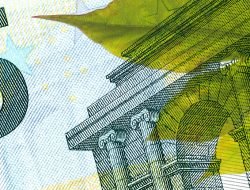Green bonds are an important lever for financing the ecological transition. They allow companies and public entities to finance their environmental projects, particularly investments in infrastructure and, therefore, buildings.
The ongoing energy and environmental transition requires massive investments, particularly in buildings. Green bonds, which appeared around 2014, allow real estate companies to promote an ecological approach and attract Socially Responsible Investment funds.
An obligation like no other

Like any bond, a green bond is a loan issued on the market by a company or a public body. However, contrary to an obligation, green bonds must provide detailed information on the projects they finance and their necessarily environmental objectives. Generally, they are a bit more expensive than other bonds. This difference is explained by demand exceeding supply and by the “greenium‘, the green premium justified by their “moral” objective, a bit like organic products which are more expensive than others.
However, tracing how the raised funds are used is not always easy. Moreover, there is currently no uniform standard for green bonds in the European Union, even if the recent adoptions of the EU Green Bond Standards and the European taxonomy are a step forward.
European taxonomy and green bonds

Budapest © Nick Shandra
The European taxonomy is a green classification system that translates EU climate and environmental objectives into criteria applicable to specific economic activities for investment purposes. It covers 40% of listed companies in sectors responsible for around 80% of direct greenhouse gas emissions. In the real estate sector, it targets:
• the construction of new buildings
• the renovation of existing buildings
• individual renovation measures
• the acquisition and ownership of buildings.
Green bonds undeniably effectively promote the ecological transition and align real estate projects with the European taxonomy. However, the current level of emissions is far from sufficient. By 2030, 260 billion euros will be needed each year to achieve the EU objectives. However, in 2020, the most prosperous year for green bonds, barely €24 billion were issued. A great effort, therefore, remains to be made to achieve the objectives.
Tags: green bonds, greenium, Obligation, renovation measures, the ecological transition, The European taxonomy






































